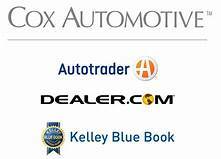Cox Automotive Update: It's All About Credit
 |
New-vehicle prices, according to a review by our Industry Insights team, have been bumping up against a ceiling for about a year now. For 10 consecutive months, new-vehicle prices have been lower than year-earlier levels. Incentive spending has also been climbing, as inventory builds. New-vehicle incentives in July were nearly 60% higher than a year ago, and while we’re not back to the crazy days of incentive packages equal to roughly 10% of ATP – we’re close to 7% today – the market sure looks to be heading that way. (Worth noting, incentive spend peaked in December 2019, when the average incentive package was equal to 10.8% of ATP.) In the EV segment, we're already there and then some. In July, EV incentives packages were equal to nearly 12% of ATP – more than $6,800 in spiffs. You can read the latest details here, and there's a good visual of the situation in the second chart in the post.
Tomorrow, our team will share its latest look at new-vehicle inventory levels – but the data will continue to carry a big asterisk. The software outage at a major Cox Automotive competitor in mid-June created a lot of volatility in our reporting of sales and days’ supply. In our July report, the impacts ended up lowering sales estimates and, in turn, inflating days’ supply levels. And that mess is now unwinding and showing up as large amounts of variability for those data series, in the other direction this time. Inventory measures are not fully back to normal yet, but this much is true: Low inventory is not holding back the new-vehicle market. There are plenty of vehicles out there.
What isn’t plentiful is credit availability. At the end of the day, credit is the lifeblood of new-vehicle sales in the U.S., as nearly 55% of sales include a loan of some sort. (Leasing is about 25% and cash deals about 20%). Credit availability is a data point we track monthly, and the latest numbers show that credit availability has declined for the fourth straight month, with all lender types and channels tightening credit access. Right now, the market is seeing higher auto loan delinquencies and defaults, and that, in turn, makes lenders less generous. Loan approval rates are down and, as Cox Automotive Chief Economist wrote in in the Auto Market Weekly Summary, “Auto credit is likely to remain tight due to the ongoing weak performance of auto loans. The year-to-date default rate is 3.06%, which is 16 basis points higher than the default rate in 2019 and closer to the 2010 default rate of 3.22%.”
Our team has been noting for a few months now that new-vehicle sales are performing below potential. High loan rates and tight credit are two major reasons, as inventory is plentiful and vehicle prices are mostly being held in check. Right now, the consumer is holding back and sales are slowing. We're shifting to a buyer’s market, but will buyers play? We shall see. Our team is expecting a relatively slow second half when it comes to new-vehicle sales. We’ve settled on a date for our official Q3 Forecast Call, when we will provide updates on forecasts and market performance. Save the Date: Wednesday, September 25th. More details to come.


